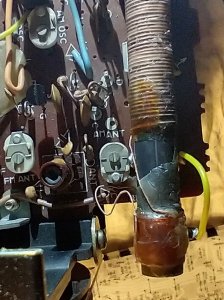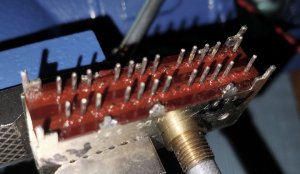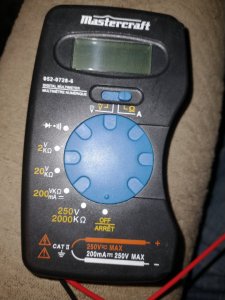I've collected audio equipment for over 4 decades, and to a lesser extent, began restoring them when my collection grew and I realized that the cost of farming them out to repair everything just wasn't sustainable. I've always strived to do things the right way, so I've not had as much experimenting with turning a screw just for the sake of seeing what it does. If that's your thing, go at it and carry on! Maybe you'll get lucky which admittedly, sometimes does happen. But I like to take a more methodical approach.
I also have a whole library of books, many on tuner and receiver theory. The book by Robert Goodman AM/FM Stereo system troubleshooting is highly useful, and contains sample or recommended equipment. I was so inspired by it that I've purchased over the years many of those same equipments that was shown there including 2 of the Sencore SG165 stereo generators, before later acquiring much more sophisticated lab grade signal generators that today would costs probably $20,000 each +. Luckily retired lab grade equipment can be purchased for cheap (by comparison). For someone wanting more info on this book, you can google it and there's also one on eBay:
https://www.ebay.com/itm/145340798631. This book is even better but it's also a lot more costly if you can find it: THEORY AND SERVICING OF AM, FM, AND FM STEREO RECEIVERS - Green. Once you get into reading these books, you'll quickly learn that it is far more difficult to grasp this concept and that audio systems are by comparison far more elementary.
So over the years, I've accumulated the RF signal generators, oscilloscopes, audio generators, marker generators, signal tracers, etc. I've aligned dozens of tuners and if there's one thing I've learned, it is that you simply can't do it blind. You'll understand once you begin doing the alignments with these tools, you'll wonder why would anyone ever want to attempt the process without them. I would use this analogy. Anyone old enough to remember tuning up classic cars with a timing light and dwell meter will understand that yes, you can adjust dwell, and yes, you can adjust timing without benefit of either the meter or timing light. AND the adjustments do make a difference. But if you do it first by ear or feel, and then follow up with the actual tool, you'll find that the setting you thought was "correct" virtually never is. Can you adjust the carburetor by "ear" without a sniffer? Yes, but if you are in CA, you'll probably fail the smog test.
Regardless, I've learned over the years is that tuners rarely ever just go out of alignment, typically a failed or degraded component is the cause of the complaint. One book I read stated that the author always suspects the oscillator amp first on AM radios because 85% of the time, transistors are the component that fails. I don't know where he got that data from, but it sounds like it's from his personal experience servicing lots of radios. Regardless, I try to discourage randomly messing with tuners because the cause of no or degraded tuner performance is usually a component related issue, not an alignment issue, and I hate to see a properly aligned tuner get knocked out of wack by random tweaking when the cause is a failed transistor, diode, or broken IF transformer wire. If you really want to try tweaking because you don't want to hire a professional, or don't want invest the cost of getting these tools necessary to do the job properly, then there is a way to sort of test the local oscillator simply by placing another AM radio nearby. I won't go into the process because you can google the method yourself, and there's youtube videos showing how. But if you have another radio, a simple handheld is fine, as long as it is working properly, it can be used. I guess I've said what I want to say on the matter, so good luck with the repair.
I suggest that if you have lots of boomboxes and tuner repair is something you may be interested in playing with, at least get yourself a Sencore SG165. It includes AM and FM signal generator, stereo generator, 455khz and 10.7mhz output as well as 67khz Subcarrier, 19khz pilot signal, even includes 10.7mhz with markers.... what more do you want? Stereo separation test? Got it. Power output meters? Got it in 10W and 100W ranges. Basically, it's the perfect boombox test tool, all in one tester. Ok, it's not exactly, cheap but for 1/4 the cost of an M90, and less than the cost of a decent M70, in my opnion, why collect all the boomboxes and not get the one tool that's going to keep them running in tip top shape? The only downside is that there are lots of probes needed to use all the functions and these testers often are missing them. An even better version is the Sencore SG80, unfortunately that one is far more pricey and almost never seen anymore. Anyone that has one often won't offer them, they are keepers in their equipment arsenal until they retire or die.






